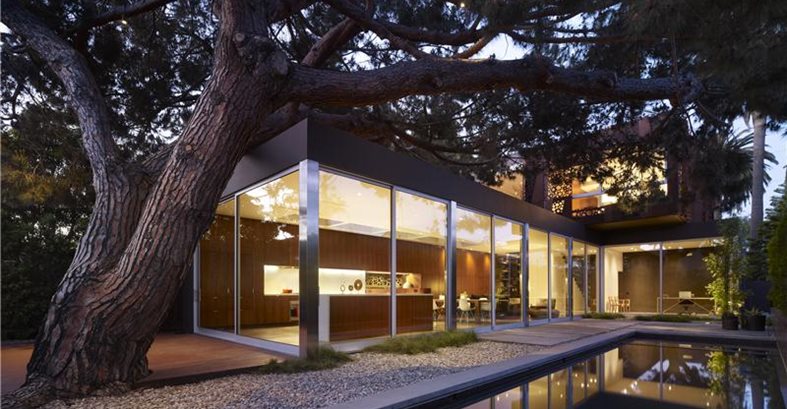It's expected for a concrete contractor to sing the praises of concrete. But what do others think of it? Do architects and designers see the value of using concrete for interior or exterior applications? Recently we had the chance to speak with Daniel Monti of Modal Design, a Los Angeles architect who frequently specifies concrete for both interior floors and outdoor surfaces and sitework. Here are his insights:
CN:
Why do you like concrete?Monti: From a design perspective I like concrete because of its versatility, it's capability to take on infinite texture and color variations and its ability to almost instantly modernize spaces. Concrete is timeless – it will look good decades, even centuries from now. In fact we just colored and polished our office floor, which was poured in the 1950's. From a practical perspective I tend to choose concrete because it is durable and easy to clean, and I often recommend interior concrete floors to families with children and pets. Concrete floors also offer better indoor air quality when compared with carpet.
Because I practice in Southern California and am always looking for ways to extend indoor/outdoor living, concrete's ability to seamlessly blend interior and exterior spaces is key. Concrete is also an excellent material for retaining heat. You want spaces to look beautiful but they also have to feel comfortable. One of our recently completed projects, the Walnut Residence, utilizes polished concrete floors with radiant heating throughout the first floor. As a LEED-designed home, it was an efficient heating choice since there is no other supplemental HVAC (heating, ventilation and air conditioning).
CN:
What keeps people from using concrete?Monti:
Most people still associate concrete with institutional or industrial buildings and instantly think of parking garages and factories when it's mentioned as a possible material. Unless a client has seen a well-executed application of concrete either as flooring or cast-in-place walls they simply don't know the possibilities. Additionally, I have heard people voice concerns about concrete seeming cold and hard and a few worry about safety if someone falls.To overcome these preconceptions it usually takes a site visit or good photos of concrete work to convince them it is a great option. However, if I have a client who has a deep connection to another material I don't push – in the end they need it to work for them and their lifestyle.
CN:
What installation method do you use for concrete floors?Monti:
For flooring first we pour, then grind, polish and seal. I like the look of slightly exposed aggregate on interior floors since it offers a beautiful visual texture within a smooth finish. It creates an appearance similar to terrazzo, but at a more affordable cost. Also, I'm partial to integral color because it creates a more natural effect than topical stains or dyes.CN:
How do you select colors for interior concrete floors?Monti:
I typically suggest warm earthy tones to my clients. Warmer tones help spaces feel comfortable and bright and steer people's perceptions away from the cold/hard feelings. I also try and stay away from straight out-of-the-bag grey since that lends itself to the institutional look and is not appropriate for most residential applications. However, some clients will request grey, as did the owners of the Casiano Residence I designed. In a case such as this, accessories like rugs, cushions and throws become essential for softening and warming the room.CN:
How do you use concrete on the exterior of your projects?Monti:
I use concrete for both patios and sitework. I like to break down patios into smaller pads with gravel or plants in between. This approach helps avoid the impression of a large, monotonous surface. I also believe that it makes open outdoor spaces more intimate by providing a sense of proportion. Some clients report difficulty getting grass or groundcover to thrive between the concrete slabs, especially in uneven sunlight situations. Gravel is a much easier and more consistent material for this purpose. At the Walnut Residence we tried using grass pavers for the driveway but ultimately replaced them with gravel since the grass never took hold consistently.For clients that are more adventurous I've incorporated board-formed concrete for landscape and retaining walls as well as smaller site features such as fire pits. The texture that the wood leaves on the concrete is really beautiful and complements both modern and rustic architecture. Board-formed concrete is more expensive, but it gives the features a sense of grounding and permanence.
CN:
What building materials pair well with concrete?Monti:
For the interior of a home, wood and concrete are a great combination. I like dark woods such as walnut, cherry and teak. Wood seems to have a softening effect on the concrete. For outdoors, corten steel and concrete are an interesting pairing. Both materials have a natural rustic appeal that partner well with each other. Modal Design
Los Angeles, CA
Find a Concrete Floor Contractor
Return to Concrete Interior Floors





